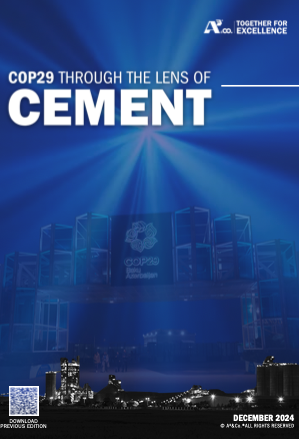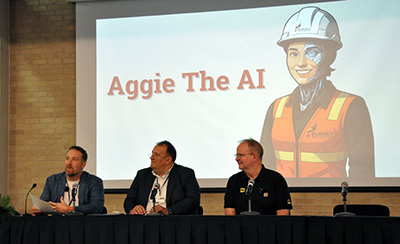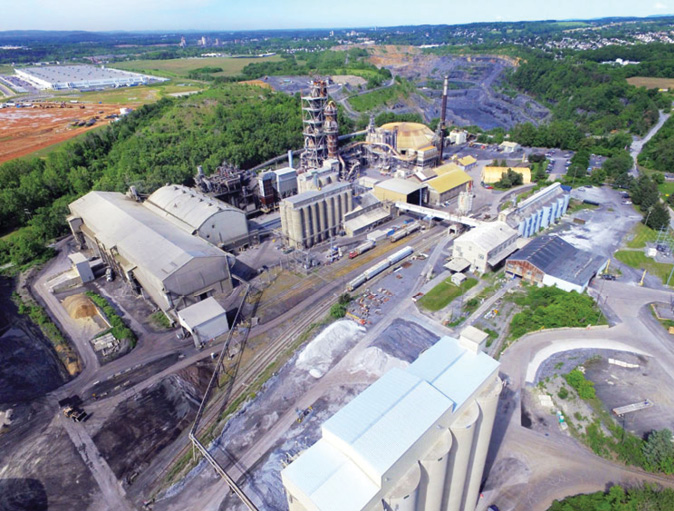Decarbonization continues to be a critical focus for the cement industry. A³&Co. has released its latest report, “COP29 Through the Lens of Cement,” which explores the key takeaways and their implications for the cement sector.

As the global focus on reducing emissions intensifies, the report emphasizes the need for immediate action in decarbonizing one of the world’s most carbon-intensive industries.
The report highlights how cement companies are uniquely positioned to lead this transition, focusing on holistic decarbonization strategies in alignment with international climate commitments. It also explores how the sector can achieve its 2030 targets and up to 80% of its 2050 decarbonization goals by leveraging technologies that are already available and successfully implemented.
“COP29 Through the Lens of Cement” provides strategic insights for stakeholders across the industry to navigate the complexities of decarbonization and ensure long-term industry resilience.
In citing implications for the cement and concrete industries, the report notes that, “The global climate landscape is rapidly evolving, with heightened attention on industries that contribute significantly to carbon emissions. As COP29 convened world leaders and industry experts to address climate change, the cement and concrete industry emerged as a focal point for transformative action.
With its substantial role in global emissions, the industry faces increasing pressure to accelerate its decarbonization efforts through innovation, policy alignment and collaborative international standards.”
The outcomes of COP29 have significant implications for the cement and concrete industry with regard to:
Policy Support – The industry requires effective policies to promote sustainable practices, such as using alternative fuels and recycled materials. Government action is crucial to accelerate decarbonization efforts.
Technological Innovation – Advancements like solar-powered clinker production demonstrate the potential for innovative technologies to reduce emissions. Investing in research and development is essential for progress.
Standardization – Establishing international definitions for low-carbon materials facilitates global efforts toward sustainable construction. Standardization helps in identifying and procuring green materials.
Also at COP29, an exclusive Roundtable on High-Emitting Sectors convened by Sanda Ojiambo, Assistant of UN Secretary-General and CEO of the UN Global Compact. This meeting brought together a select group of CEOs and C-Suite executives from companies in high-emitting sectors that are actively engaged in climate action.
The roundtable focused on the distinct challenges associated with decarbonization in high-emitting sectors, with the objective of identifying and exploring priority areas for policy action and public-private collaboration.
It also provided a forum for input on effective frameworks to support industrial decarbonization.
Eng. Amr A. Nader, CEO of A³&Co., represented the cement sector to advocate for transformative policies and actionable pathways under NDC 3.0, with discussions centering on the private sector’s aspirations and the critical role of the UN Global Compact in fostering effective policymaking to support climate transitions aligned with maintaining a below 2°C scenario.
In addition, he emphasized the unique challenges and opportunities of reducing emissions in the cement sector, stressing the need for collaborative efforts across industry-wide and governments due to the sector’s limited decarbonization pathways.
During the roundtable, Nader outlined a clear course of action for the cement industry, emphasizing the necessity for sector-wide adoption of Science-Based Targets initiative (SBTi) guidelines for greenhouse gas (GHG) emissions reductions.
He stressed the importance of prioritizing high Technology Readiness Level (TRL) solutions for producing low-carbon cement and highlighted the urgency of setting tangible, near-term milestones by 2030 to ensure progress toward long-term decarbonization goals.
View the full report at https://drive.google.com/file/d/122m3VT9EmV-Kl65u7lokF4u5t33UpmuW/view.


